Zendure Superbase Pro 2000 Portable Power Station Review
This portable power station has power storage to spare and plenty of ways to share it
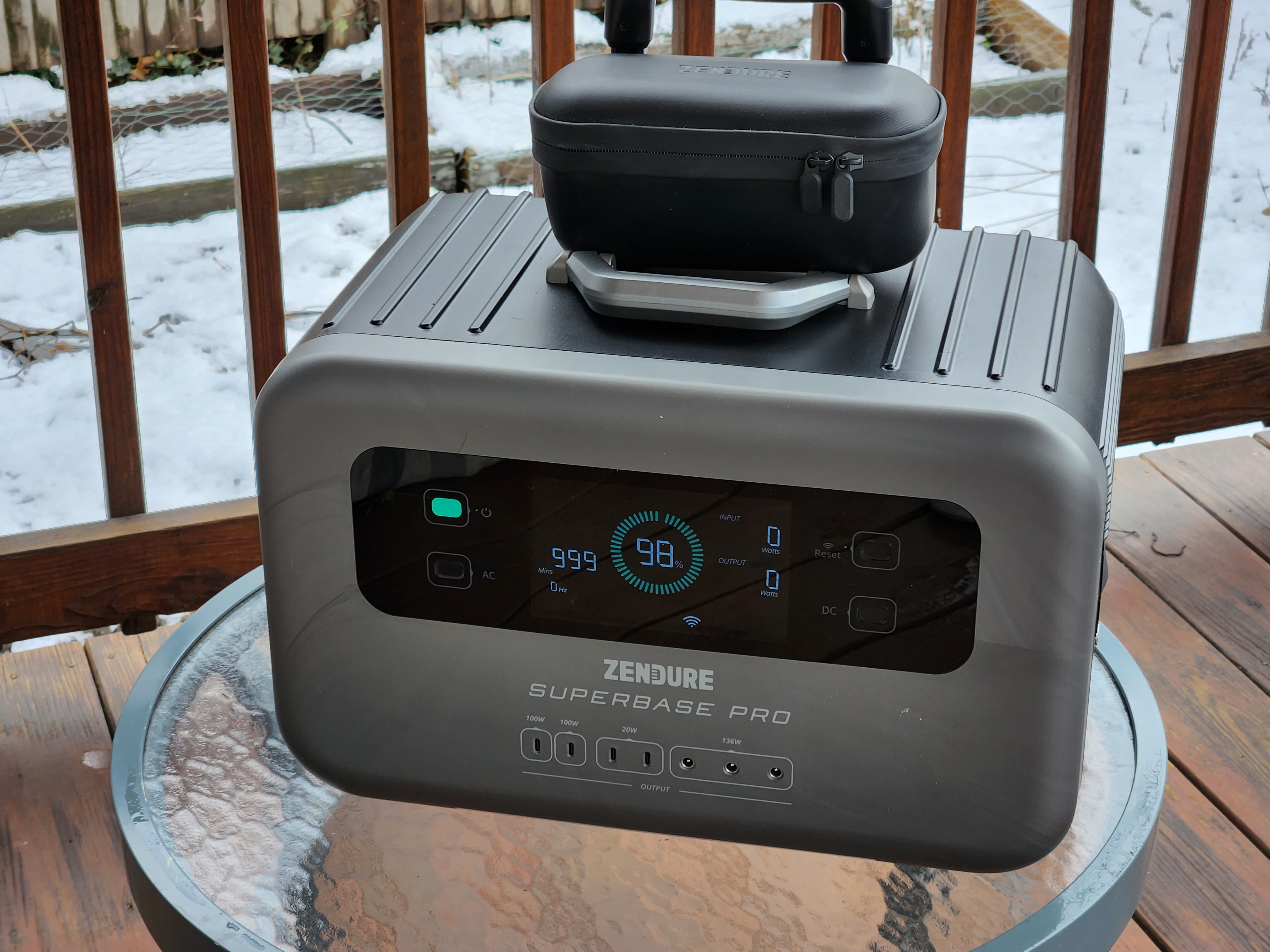
The Zendure SuperBase Pro 2000 offers a lot of flexibility and power for it's size, and the plentiful power options make it a solid choice for portable power. While on the heavier side, it offers enough juice to run most devices without issue and offers an easy platform for those who need something simple.
-
+
Huge battery capacity
-
+
14 outputs provide plenty of ways to charge and run devices
-
+
Easy to control and monitor with the app
-
-
Very heavy and bulky
-
-
Charging from AC at 1800 Watts can be a strain on cables
Why you can trust T3

The best portable power station is the one that offers the trifecta of portable power: capacity, power, and flexibility. The Zendure SuperBase Pro 2000 performs well in all three areas, offering a huge 2096 Watt Hours capacity to store energy, the ability to output over 2000 Watts at once, and the flexibility to power multiple 110V AC devices with six sockets.
It's got a lot of flexibility for a power station, and the good news is that it works well for just about all situations. There are a few caveats to this, however, but most of them can be forgiven. If you're hoping to find a solid portable power solution, the Zendure Superbase Pro 200 may just be what you're after. Read on to find out more.
ZENDURE SUPERBASE PRO 2000 PORTABLE POWER STATION: PRICE & AVAILABILITY
The Zendure SuperBase Pro is available now in two different capacities: the $1599 SuperBase Pro 1500 with 1440 Watt Hours capacity and the $1699 Superbase Pro 2000 that I tested with 2096 Watt Hours capacity.
ZENDURE SUPERBASE PRO 2000 PORTABLE POWER STATION: DESIGN
Zendure describes the design of the SuperBase Pro 2000 as a “suitcase design,” but if your suitcase is like this, you are overpacking. It weighs 46.7 lbs (26.2 kg), which is more than double the carry-on weight limit of most airlines. It takes up a lot of space at 17 inches wide and 14 inches deep.
Fortunately, you don’t have to carry it most of the time: the built-in wheels and extending handle mean you can wheel it around and only use the included handle to lift it in and out. It may be designed to work like a roller suitcase, but it feels like one stuffed with lead ingots.
Most of that weight comes from the Li NMC (Lithium-Nickel-Manganese-Cobalt) oxide batteries inside, which hold an impressive 2096 Watt hours of power. If you want something a bit lighter, the SuperBase Pro 1500 uses the lighter LiFePO (Lithium-Iron-Phosphate) battery type, which reduces the weight to a more luggable 41.6 lbs (18.8 kg). It also reduces the capacity to 1440 Watt hours, though.
ZENDURE SUPERBASE PRO 2000 PORTABLE POWER STATION: FEATURES
The upside of the large size of this portable power station is that there is plenty of space for connections, and the SuperBase Pro 200 takes full advantage of that, with 14 outputs and seven inputs. You get a remarkable six three-pin 110V AC outputs, four USB-C ports, three 13V DC outputs, and a single 12V car lighter-style output.
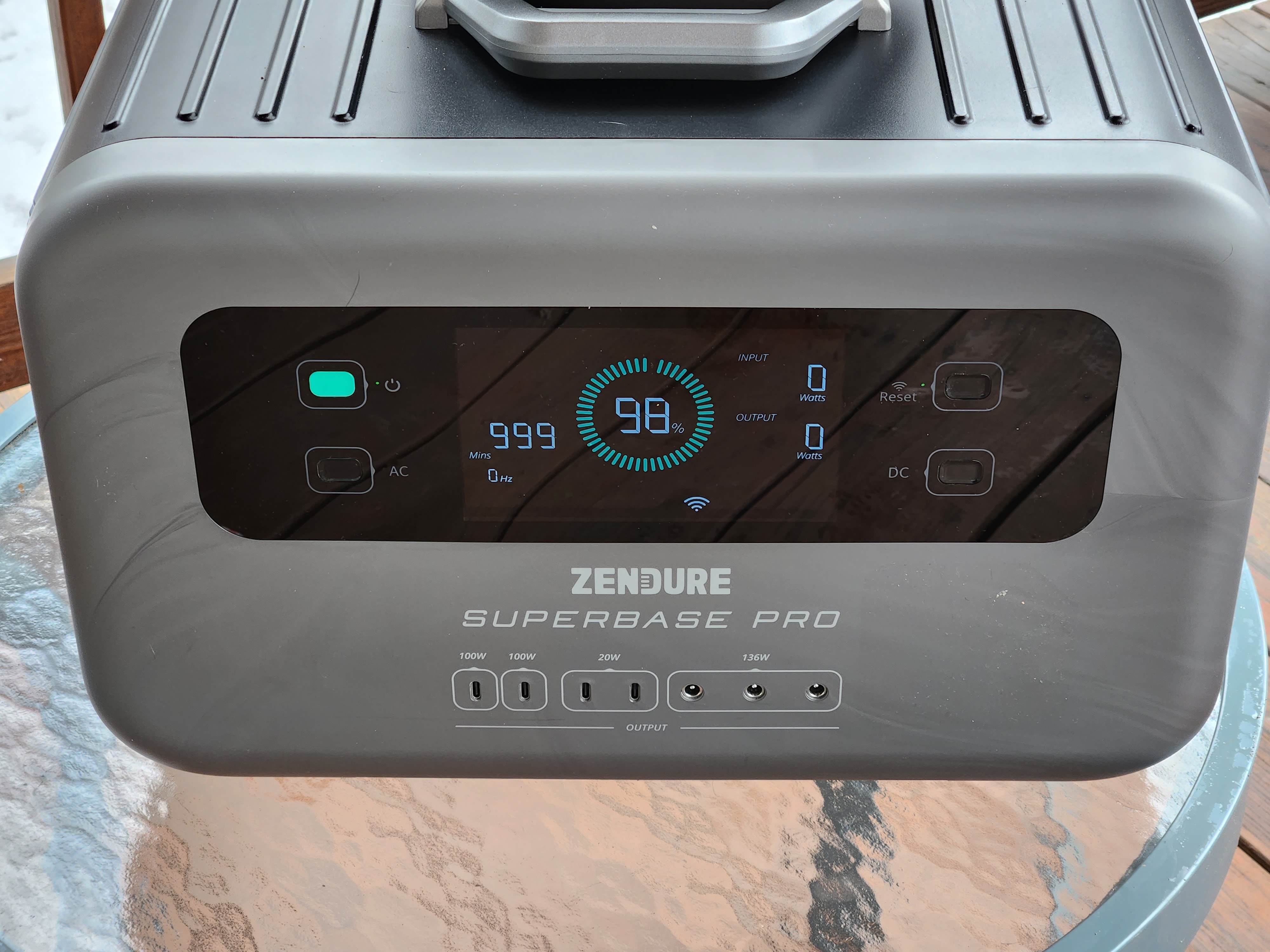
The six 110V AC outputs can continuously handle a maximum of 2000 Watts (2 Kilowatts) or a brief peak of 4000 Watts. That’s enough to run some pretty hefty appliances, such as power tools or a small oven. It also offers a special mode called AmpUp that ups the limit to 3 KW, albeit at the price of increased noise and reduced battery life.
The first two USB-C ports can each manage 100 Watts, while the other two are limited to 20 Watts. Still, that’s enough to charge two laptops and two phones at the same speed as the fastest USB-C power adapters, so it is unlikely to be a big problem. Zendure also includes a USB-C to USB-A adapter for connecting devices that don’t have USB-C ports.
The DC outputs are the standard DC5521 type used for RV appliances like portable refrigerators and tire inflators, and each can output about 130 Watts, which is enough to run most devices designed for use on the road. There will be no problem keeping an RV freezer going for many days.
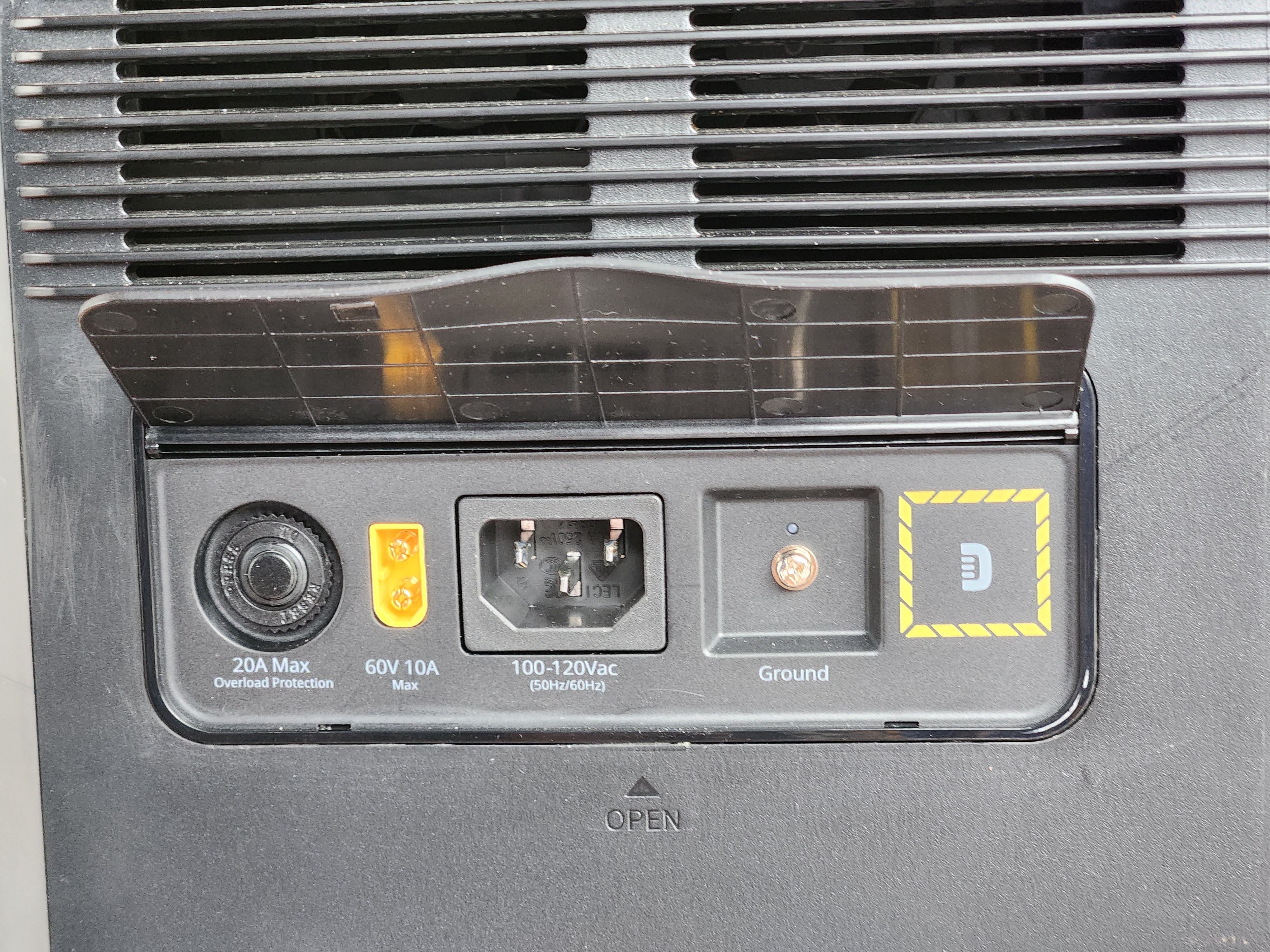
Charging the SuperBase Pro 2000 can be done straight from an AC wall socket or from solar panels. The inputs are all under a panel on the right side, including a 110V AC socket and an XT60 solar panel input. Both can handle a lot of power: the AC socket can handle up to 1800 Watts, and the solar input up to 600 Watts.
That’s a lot of juice, but the SuperBase Pro 2000 needs it: it still took about TK hours to charge from a standard 110V wall socket, and you will need a *lot* of solar panels to charge up this monster battery.
It also includes a GPS and 4G cellular connection, which Zendure says can be used for remote diagnostics or firmware updates. That feature isn’t user-accessible: you can’t use this for Internet access or to provide WiFi coverage. You also get a lot of cables in a handy case that slips over the extending handle, including cables to connect the optional solar panel and a USB-C to USB-A converter for connecting older devices.
This monster battery can be controlled from the front panel or the Zendure app, available for iOS and Android. This excellent app uses WiFi or Bluetooth to connect to the battery and provides lots of information about how it operates: at a glance, you can see how much power is coming in, the charge level, and how much power is going out. You can also switch the outputs and control how much power it draws when charging.
ZENDURE SUPERBASE PRO 2000 PORTABLE POWER STATION: PERFORMANCE
The SuperBase Pro 2000 aced all my tests, running multiple 110V devices like power tools and a small refrigerator. It also handled charging a couple of laptops and a cell phone at once and held enough juice to keep a cell phone charged for a couple of weeks. The only things that tripped the overload were a large table saw and a full-sized refrigerator, which drew a lot of juice while starting up.
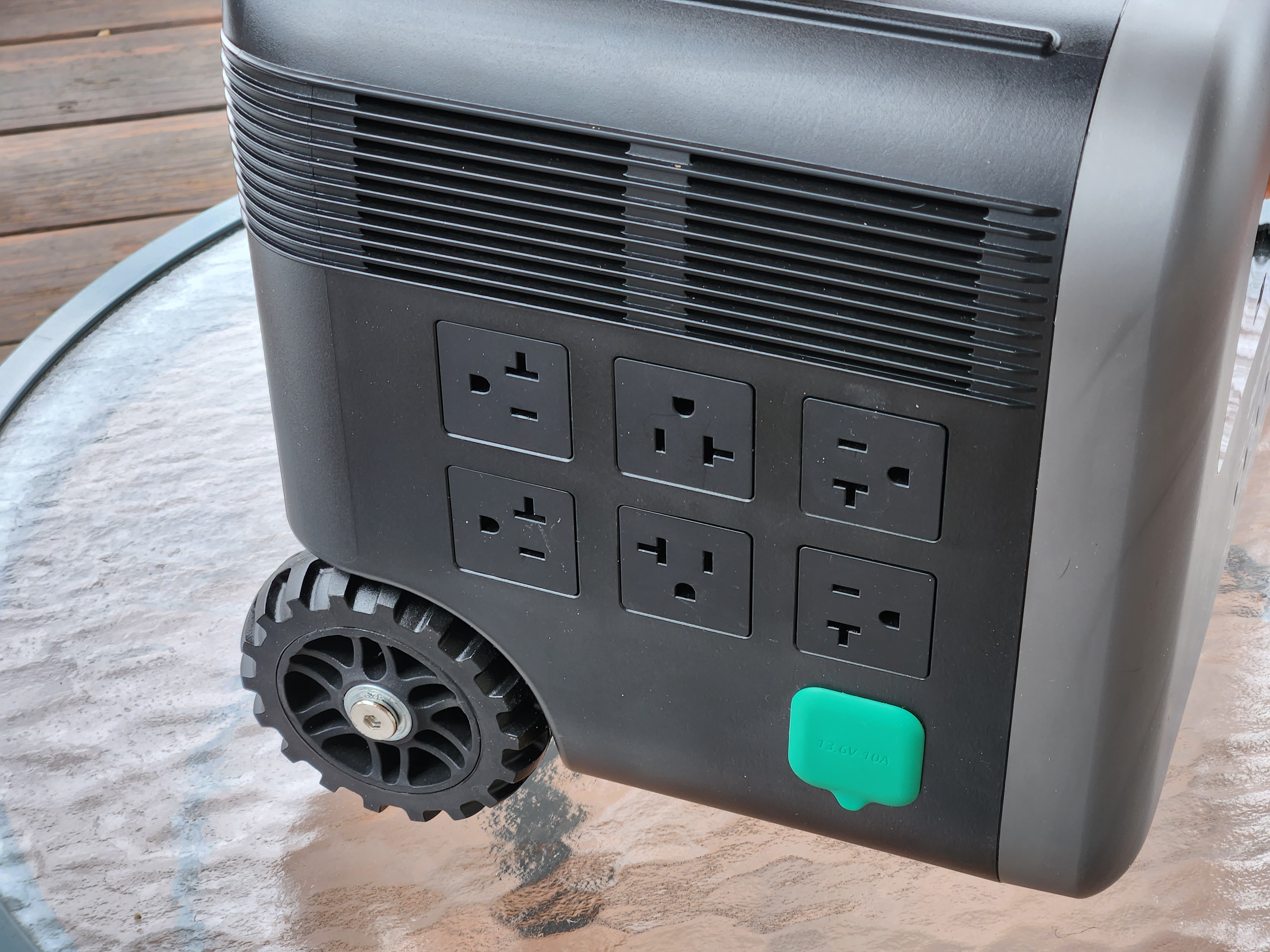
The SuperBase Pro 2000 does require some caution while charging: at one point, I plugged the AC charging cable into a plug block by mistake rather than into a wall socket. After charging for a while, the plug block got rather warm and failed because the cabling inside wasn't designed to carry that much power. The label on the back said it was rated for up to 1800 Watts, but the SuperBase Pro 2000 was drawing nearly that much from one of the sockets alone.
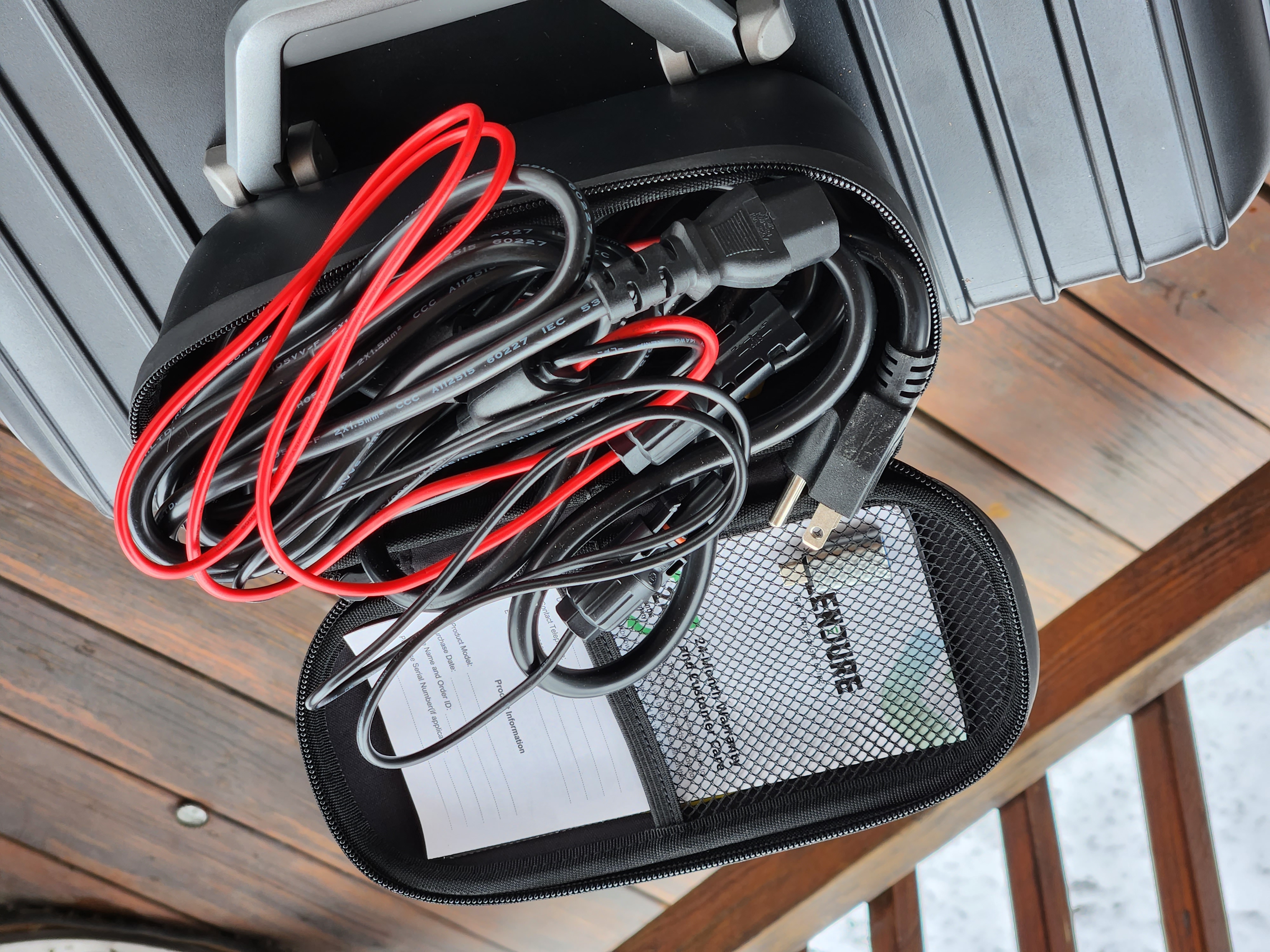
That’s a cautionary tale: devices like the SuperBase Pro 2000 that draw a lot of power should be plugged straight into the wall socket only, which should have cables designed to carry that amount of power. That sort of mistake is also how electrical fires start. After that experience, I was more careful about where I charged the SuperBase Pro 2000 and reduced the AC input power limit to 1200 W to reduce the load on the older wiring in my home. This portable power station also does not support charging from a USB-C power source, so you can’t use a laptop or phone charger to top it off.
This battery can also work as an uninterruptible power supply (UPS): if your power goes out, it will switch over to battery power in 15 milliseconds, which means that your plugged-in devices will keep going when the power goes out. That’s a handy feature for computers, networking equipment, or medical devices like a CPAP or oxygen concentrator.
ZENDURE SUPERBASE PRO 2000 PORTABLE POWER STATION: Verdict
The Zendure SuperBase Pro 2000 is a beast of a battery in every sense of the word. It can power anything from cell phones to a toaster oven you are likely to need on a trip while doubling as an emergency power backup for vital devices at home. It’s a powerful, flexible, and portable power source for multiple devices.
Portable is a relative term, though: It is darn heavy. The wheels and extendable handle help, making it easier to move over flat surfaces and around the house, but the 46.7 lbs weight is a lot to carry around if you are camping or traveling.
The Zendure SuperBase Pro 2000 offers great value for money: $1599 gets you an awful lot of storage capacity compared to other portable power stations. It is heavy, so you should make sure you need that much power before you start lugging it around with you.
Sign up to the T3 newsletter for smarter living straight to your inbox
Get all the latest news, reviews, deals and buying guides on gorgeous tech, home and active products from the T3 experts
Richard Baguley has been writing about technology since the 1990s, when he left a promising career in high finance to work on Amiga Format magazine for Future. It has been downhill for him ever since, writing for publications such as PC World, Wired and Reviewed.com. He has tested gadgets as diverse as 3D printers to washing machines. For T3, he covers laptops, smartphones, and many other topics. He lives near Boston in the USA with his wife, one dog, and an indeterminate number of cats.
-
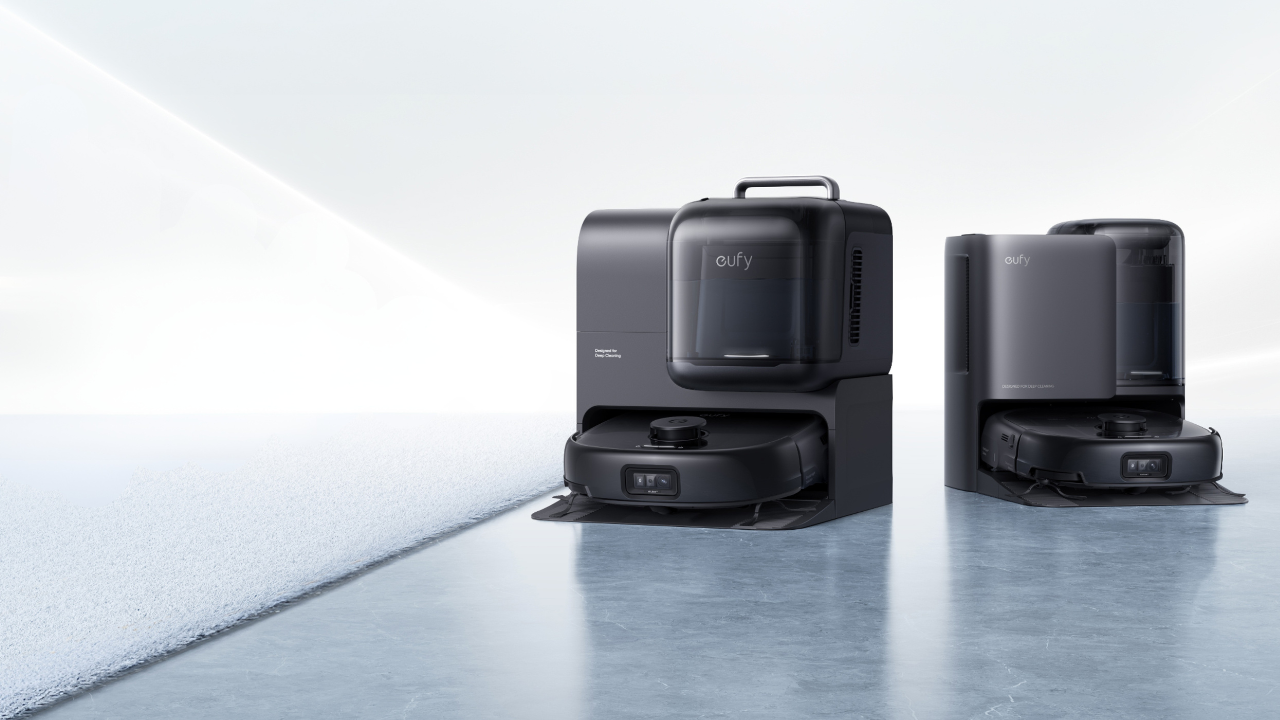 Eufy’s latest robot vacuum doubles as a portable deep cleaner for spot cleaning
Eufy’s latest robot vacuum doubles as a portable deep cleaner for spot cleaningA global first in home cleaning tech
By Lizzie Wilmot Published
-
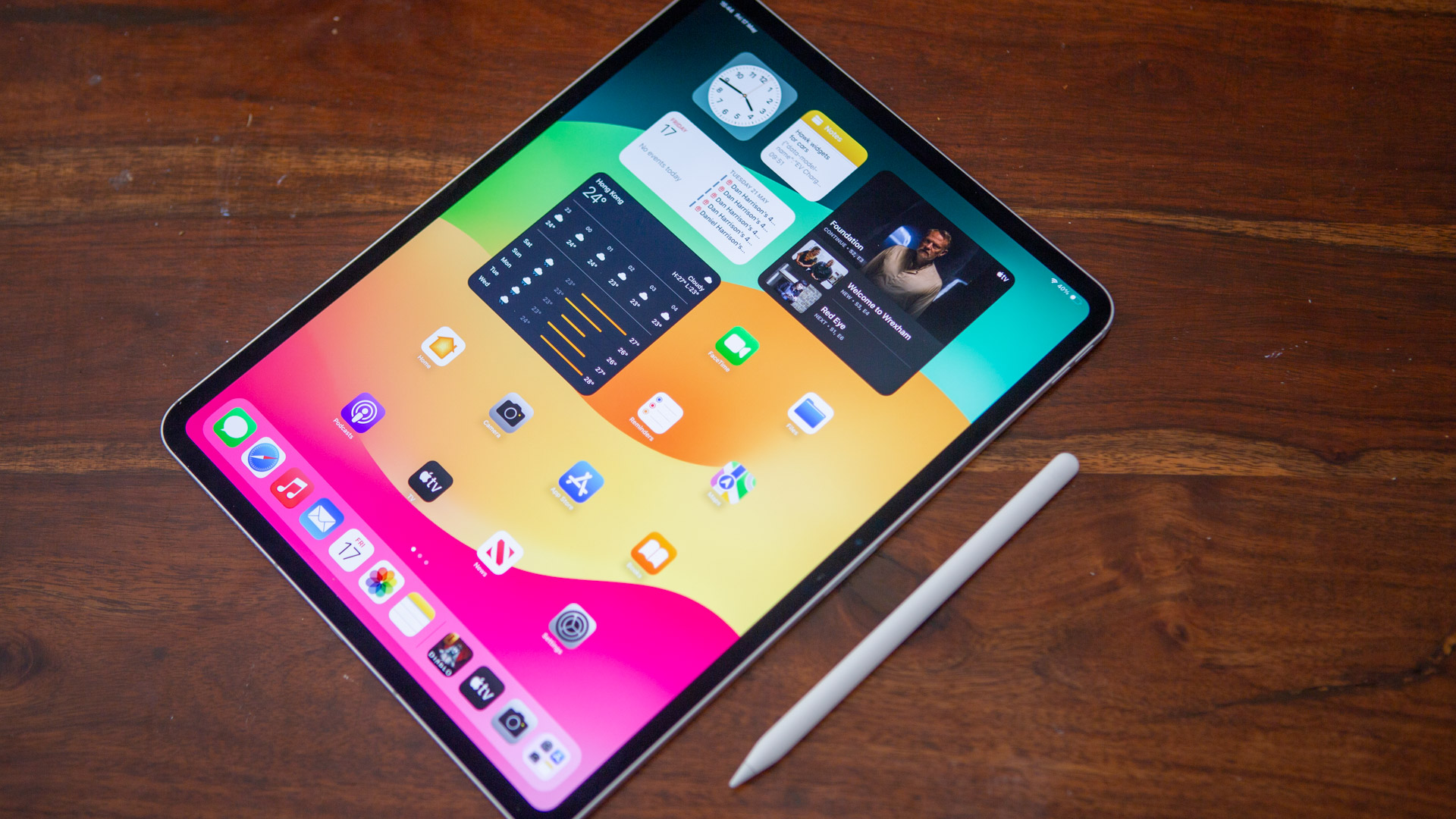 iPad reportedly getting major makeover and your current model could benefit too
iPad reportedly getting major makeover and your current model could benefit tooApple is said to be making a change that iPad power users have been wanting for years
By Carrie Marshall Published
-
 Eve’s smart plug gets impressive Matter upgrades – but I’m most excited about the app
Eve’s smart plug gets impressive Matter upgrades – but I’m most excited about the appEve Energy adds Matter support and an updated Android app
By Bethan Girdler-Maslen Published